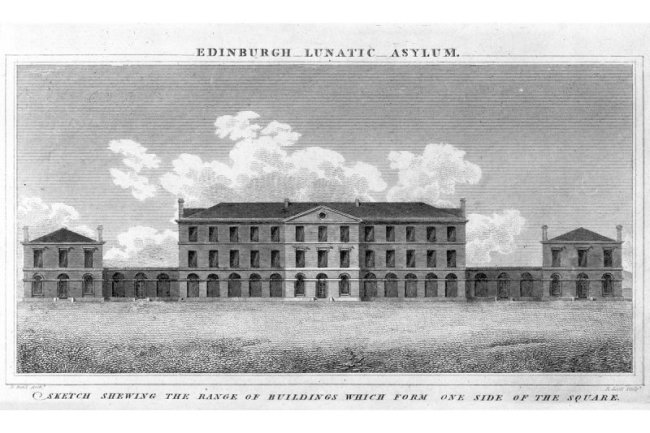The text for the 23 October 2013 meeting was Brady Thomas Heiner’s ‘Foucault and the Black Panthers’ (City, 2008). The article traces the evolution of Foucault’s later writing on biopower and the disciplinary society on his encounters with the Black Panther struggles. Exposing connections such as Foucault’s friendship with Jean Genet who apparently gave Foucault the prison writings of prominent Black Panther activists George Jackson and Angela Davis (Genet himself wrote the preface to Jackson’s Soledad Brother), Heiner asks why Foucault committed ‘epistemic violence’ by not acknowledging the Black Panthers as an inspiration for his conceptual framework. Epistemic violence or injustice was defined by Heiner (quoting and following Miranda Fricker) as: when ‘a speaker receives the wrong degree of credibility from his hearer owing to a certain sort of unintended prejudice on the hearer’s part’.
Initially, the article was contextualised within a current influx of revisionist histories that seek to uncover silenced projects and influences e.g. of Black and Left movements. Examples included Susan Buck-Morss’ Hegel and Haiti (2000) and geographer Matthew Hannah’s paper on the Croissant Affair (about the Red Army Faction lawyer Klaus Croissant, not the pastry, although a pile of baked goods apparently also made an appearance in either the affair or the paper presentation…). From there, the conversation centred around the following interconnected themes: epistemic violence; racism, prisons and state control; the impact on Foucaultian discourse.
In terms of ‘epistemic violence’, questions were raised around the choice of the word ‘erasure’ over ‘silencing’, and in what ways erasure might potentially be a more violent gesture than mere silencing, e.g. through the possibility of silenced voices becoming amplified again, but erased voices being impossible to retrieve. Examples from Glasgow based research included a prison art programme where the individual authorship of prisoners was denied. Curatorial practices formed another lens of looking at ‘epistemic violence’ – particularly contemporary ‘curation’ of citations in academic work: of everyone in a particular discourse, who do you cite and why?

From here, we moved to questions around potential non-academic epistemic violence. In this context, the image of Black Panthers was flagged up: why do we know more about their militancy than about their community programmes such as meals for children, medical aid and alternative schooling? How much do we know about the violent sabotage of these successful ‘parallel institutions’ by the US state? A map included in the article prompted further comments on ‘top down’ and ‘bottom up’ racism, infrastructure and control. The map was reproduced as part of a Black Panther Party petition for community control of police in Berkley (California) and showed three proposed autonomously policed areas entitled I (‘black area’ [sic]) , II (‘campus area’) and III ‘white area’ [sic]).
Questions revolved around whether the sharpness of these boundaries corresponded to reality and also around through what kinds of violence these boundaries came into being.
A further topic was the ‘prison-industrial complex’ (Davis) and its ethical and economic relation with communities (e.g. Black, poor, affluent). The dependency of certain communities on the labour and infrastructure provided by prisons was as much highlighted as the dubious justifications for disproportional sentences relative to the crime committed (50 years for armed robbery?) and the fabrication of evidence against Black Panther and other political activists to silence, erase, contain or control these voices. Conversely, it was noted that most political activists still managed to gain a voice through prison writings, although it was also argued that censorship of such outputs was on the increase in line with a general increase in surveillance practices. An incident from prison fieldwork in Canada, where a letter was never delivered from PhD researcher to prisoner, served as an example.
Regarding the still imprisoned, recently released or still persecuted Black Panthers such as Herman Wallace, Albert Woodfox and Assata Shakur, a question was asked about the ending of the article, which argued that ‘[t]he epistemic injustice inflicted upon the Black Panthers and other third world liberation movements can be rectified and safeguarded against only after the social and political injustices inflicted upon them have been rectified’. While the reverse situation seemed almost more logical (the value of BPP activism and the injustices committed against them need to be proven in order to mount pressure for a release), it was also clear that the article was written with political urgency (the need to free the remaining Black Panther prisoners), and thus the conclusion needed to stress this in order to function as a call to action.
Lastly, the soundness of the argument was debated: was the connection convincing? Where was the evidence a bit murky? Feelings around this were a bit mixed, mainly because of certain omissions that could have provided alternative answers, e.g. why was Foucault’s homosexuality never mentioned – and the potential urgency to deal with the persecution of this ‘deviance’ by states around the world? What about French citational practices or expectations of the intellectual? While such alternative explanations might not affect the deed of epistemic violence, they might have been able to provide a fuller set of potential reasons for a shift from racial to sexual politics. Overall, the Black Panther influence was regarded as plausible, given Foucault’s references of racism in his early lectures on the subject and because of his contacts with Genet. Here, we wondered about the influence of a potentially revised history on the reading and use of Foucault. With few Foucaultians in the group that day, some speculations were made about particular applications of Foucault’s theories in the department and beyond. These mostly concluded that the revised history would make a significant difference in quite a few cases.
Overall, the article was appreciated as an interesting provocation that gave pertinent insights into the on-going Black Panther and civil rights struggle. It was also appreciated as a prompt to think about the reasons for and perpetuation of institutionalised/economically motivated racism and the silencing or erasure of diverse groups of people.







